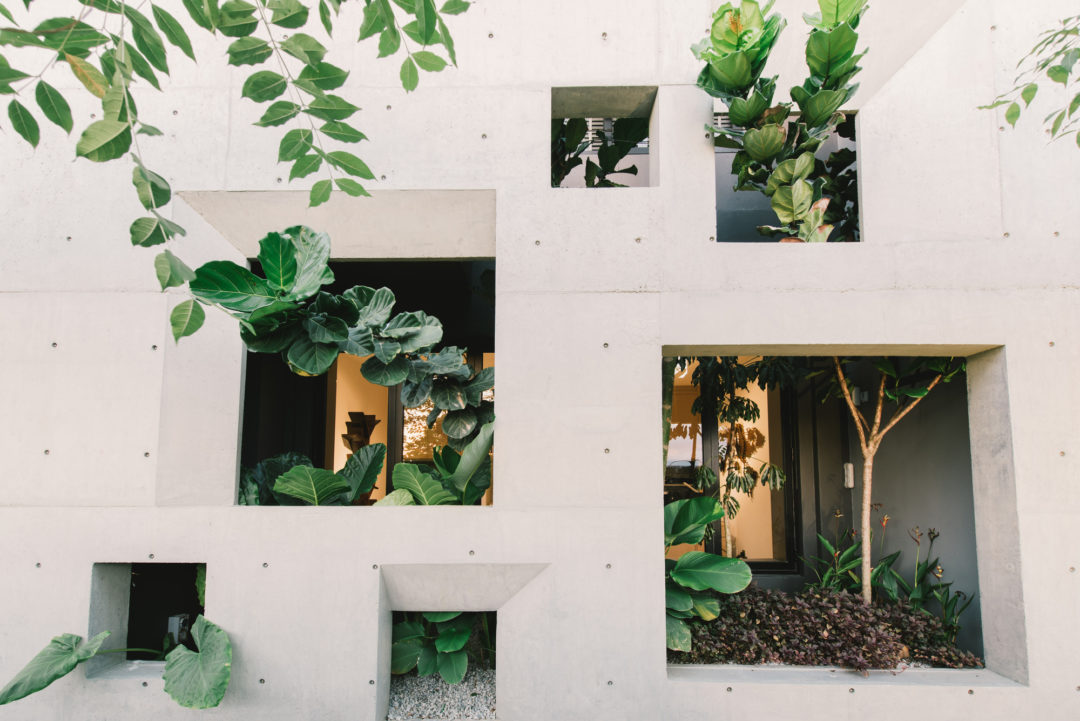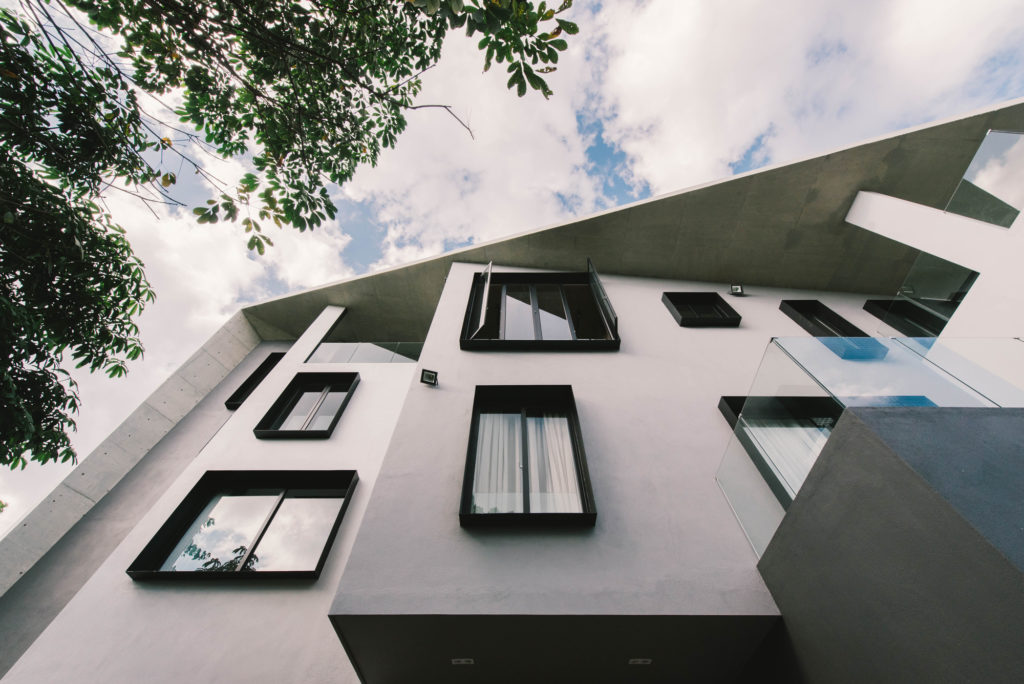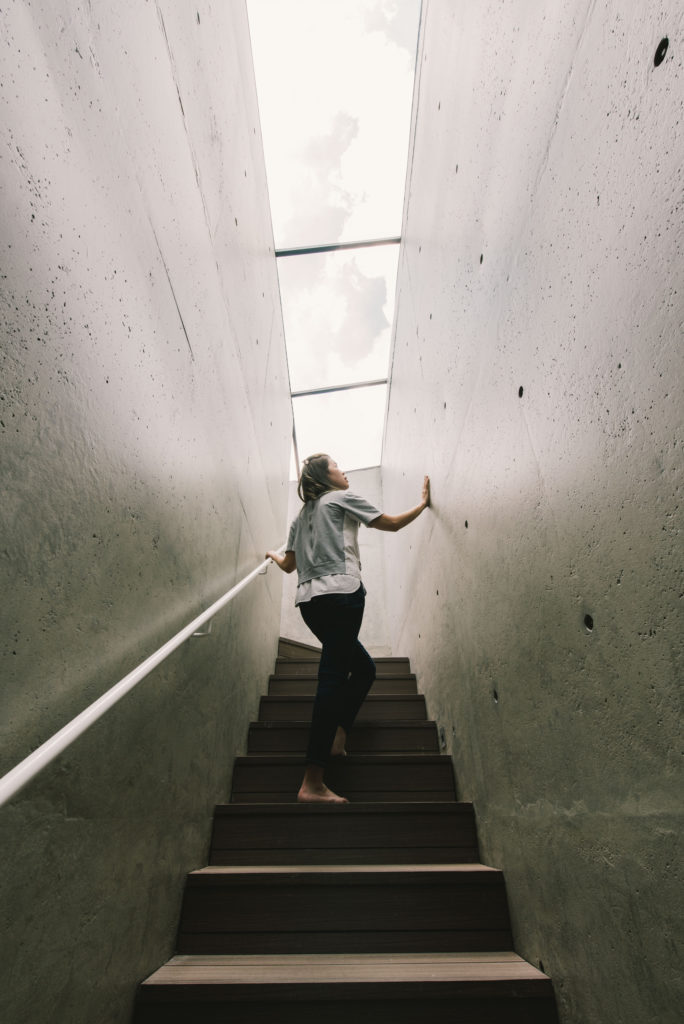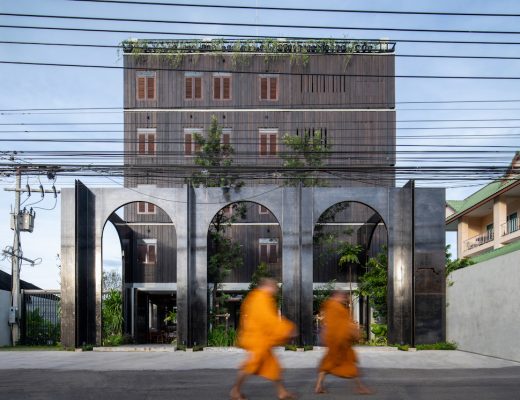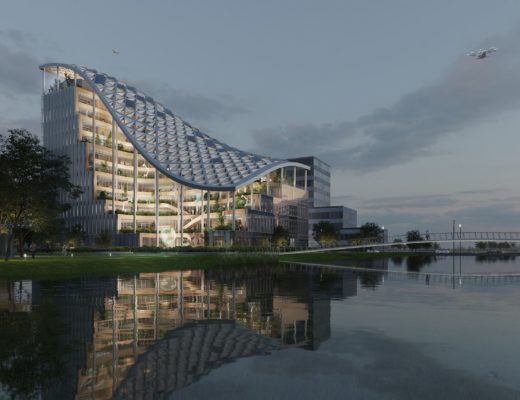The Window House, designed by architect Cherng Yih Lee of Formzero Architects, reinterprets the relationship between indoor and outdoor spaces. Sitting on the edge of a forest on the outskirts of Kuala Lumpur in Malaysia, the design of the 900m2 house doesn’t attempt to blend the outdoor and indoor. Rather, it optimises the indoor space with the addition of windows.
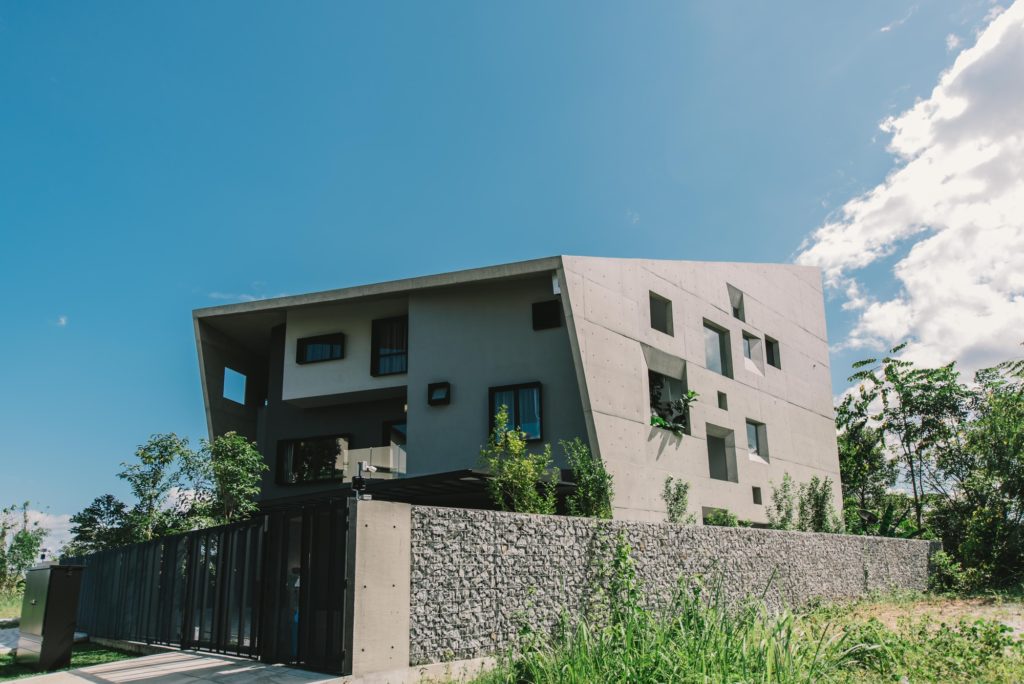
The design concept of The Window House departed with three tectonic approaches through the manipulation of the form and function of window. By doing so, the ultimate aim of this project is to strengthen the house owner’s bonding with the existing context without diluting the design brief.
The concrete shell is shaped in a telescoping form. It is tapered at the front, widened towards the forest in both plan and section, like creating a giant window frame to look out to the forest. At the same time the tapered front facade is projected to the street that creates a more human scale house.
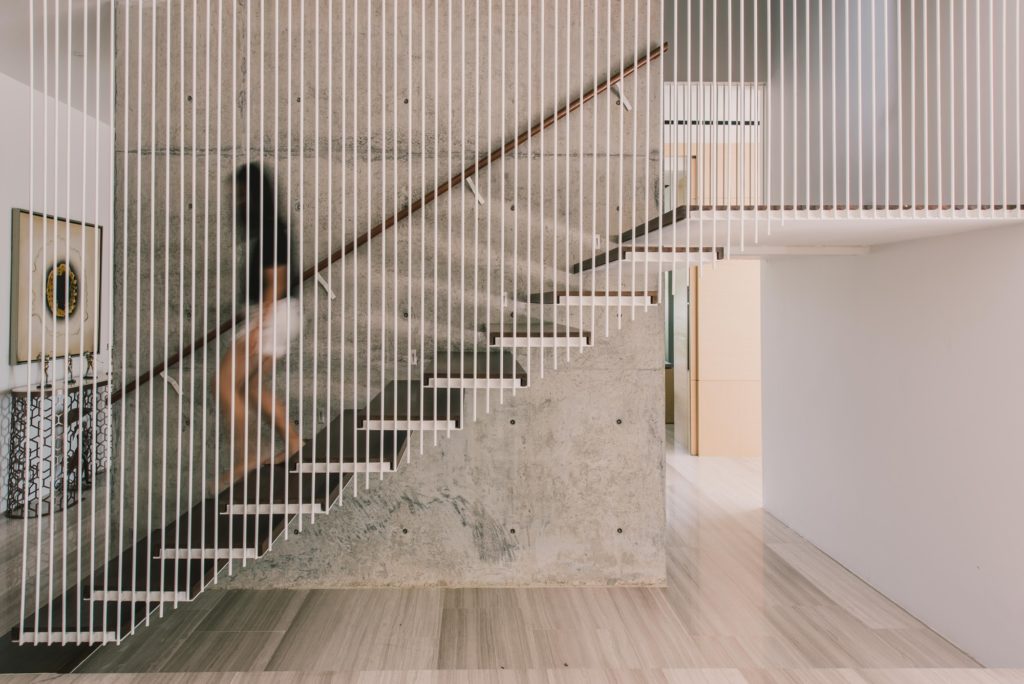
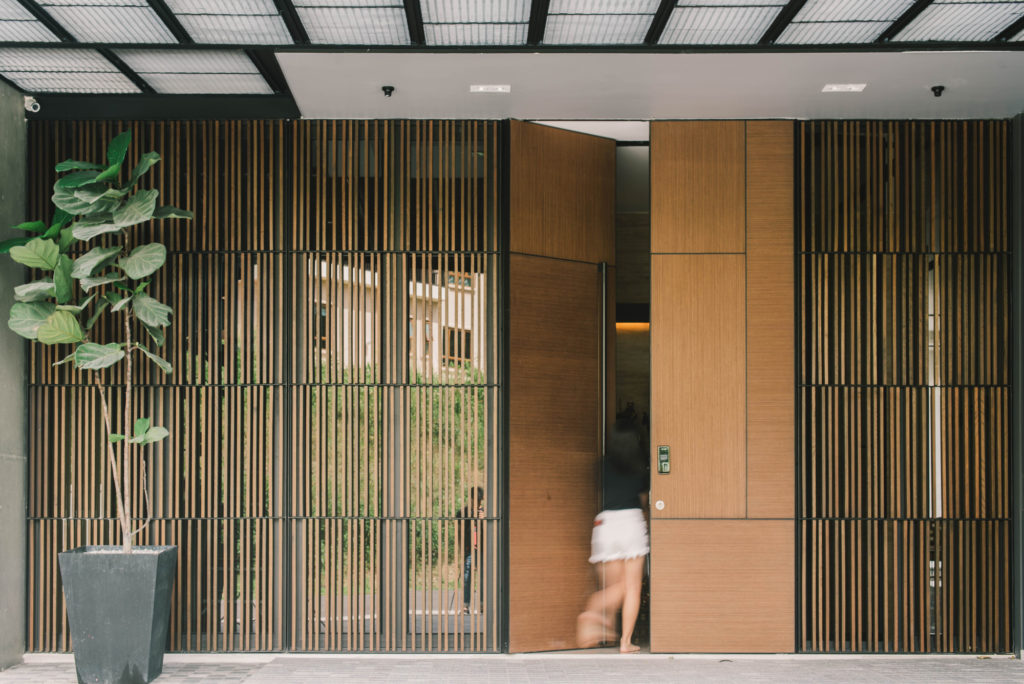
Rooms with different functions deserve different windows. To create specific viewing experience for each room, the proportion and the position of each window on the north and south facade are derived out of the function of each room. Instead of imposing an arbitrary aesthetic, the facade therefore becomes a collective expression of each room. In addition to enhancing the quality of framing view, the windows are outlined with deepened eaves, every scenery is captured in a picture frame.
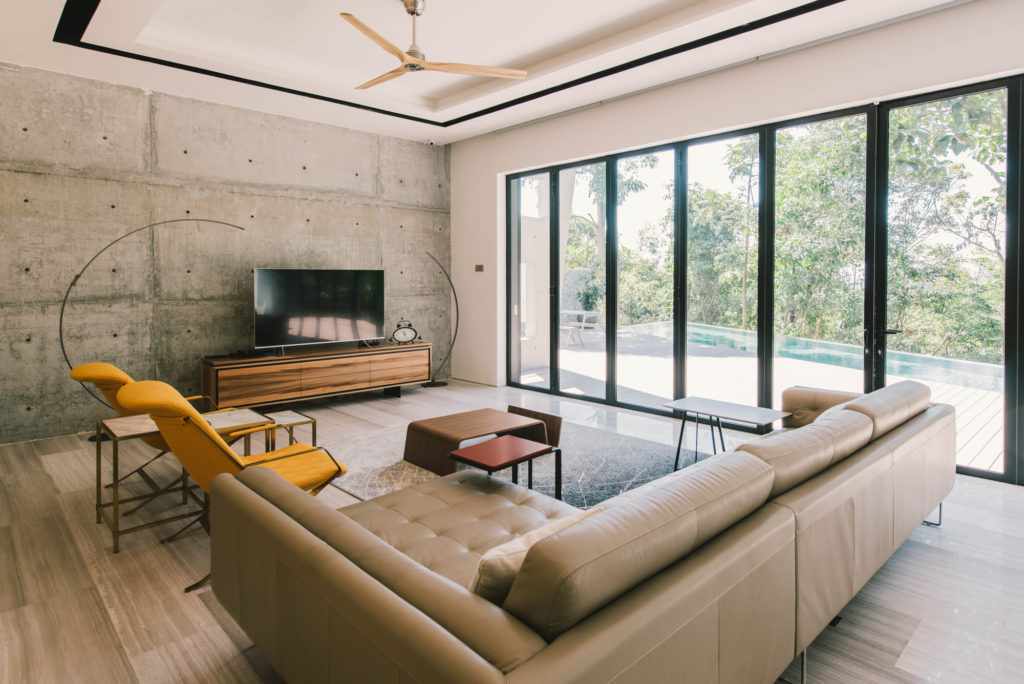
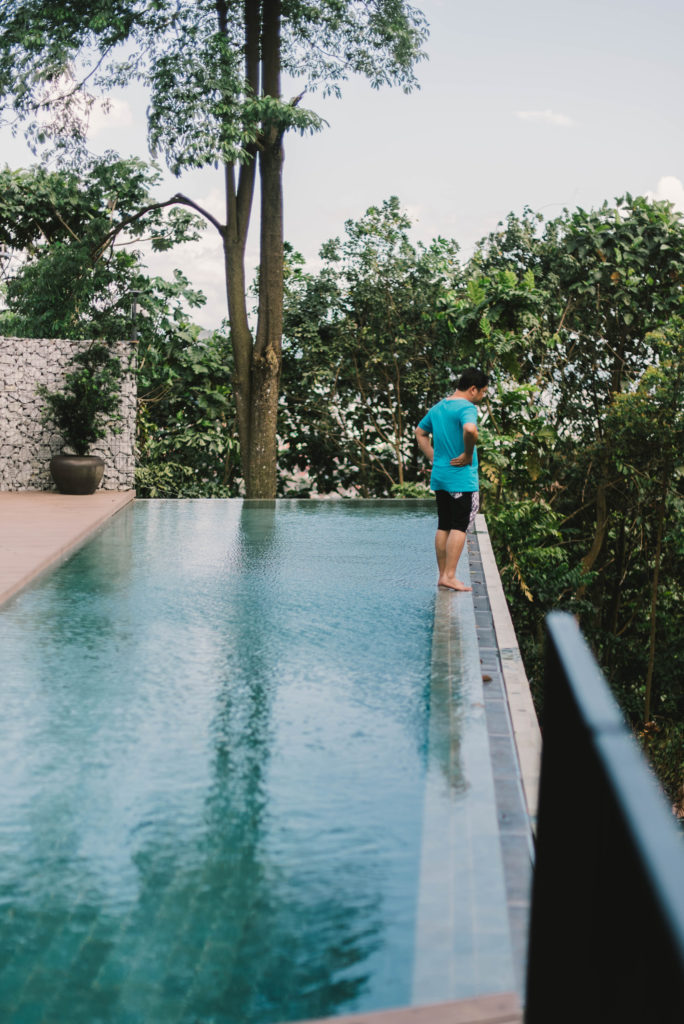

From east to west, this house is wrapped in an additional layer of perforated concrete wall which appears like a shell. Apart from acting as a thermal protection with cross ventilation, the shell is the first layer to control the privacy. Between the house and the concrete shell, multi-level of landscape is inserted in order to create an ambiguous condition which makes the landscape to appear more like an indoor space.
Photos: Ronson Lee / Twins Photography

